When Burgundy Crosses the Border (Legally!)
-niche wines, passe-tout-grains, & more
Interested in one-on-one curation time with me? No commitment or minimum purchase required. Flexible appointment times including weekends. Drink better!
Appreciate my wine recommendations? Thanks to all the paid subscribers for their support! Help me continue sharing the world of wine with you!
Are you gushing already?
Ooops, I meant to hide it better.
I could not hold back last Thursday night while evaluating today’s featured wine - a red wine labeled Côteaux Bourguignons.
Let me guess … Bourguignon means Burgundy … so Pinot Noir!
You are 40% right. It is a blend of Gamay and Pinot Noir (60% and 40% respectively). These grapes are typically not blended as they can hold their own alone. However in these proportions, along with proper winemaking, these blends just sing!
Didn’t some duke ban Gamay from Burgundy in the Middle Ages?
He did, but you know how these things work … banishment just drove it underground!
Ah so this is bootlegged Gamay.
Maybe more like its ancestors were black market Gamay, which now accounts for less than 3% of Burgundy grapes.
Okay so this is pretty niche then. I love niche!
Okay, now let’s place ourselves within France where Burgundy is located, southeast of Paris. Here more than 50% of wines come from one of 7 greater regional designations. These by definition are NOT subregions. Rather, this means the grapes can come from a broader geographic area within Burgundy. These are the most affordable wines within Burgundy.
Beyond the regional designations are 77 subregions, broken down into 44 villages levels and 33 grands crus levels - see the Burgundy pyramid below to understand the hierarchy.
Note, only 1% of production comes from the grand crus level. These wines have become extremely expensive, with some selling for thousands of dollars per bottle!
With a name like Côteaux Bourguignons, you would think Burgundy all day, right?
Wrong!
Rather Côteaux Bourguignons, along with the 2 sparkling regional designations (see list below), allow grapes grown beyond Burgundy – specifically from northern Beaujolais.
Utter madness!
This schematic shows Chablis as the most northern area within Burgundy, all the way down to the Mâconnais at the southern end. The area of the Mâconnais is just north of Beaujolais. Today’s wine had grapes grown in the Mâconnais-Beaujolais area.
Huh?! Feels like cheating!
Okay for those who want to know this … and you know who you are…!!! What are all 7 regional designations, and which can make wine with Gamay?
Done! Check out the list with wine styles for each designation, along with allowable grapes. Gamay is only allowed in the last 5 regional designations listed. Gamay is not allowed in any of the 77 subregions.
Too much detail, I’m jumping down past the list. I know who I am! (sheesh!)
Bourgogne: white, rosé, and red wines made from Chardonnay, Pinot Noir (some César in the Yonne) grown in regional Burgundy.
Bourgogne Aligoté: white wines made from Aligoté grown in regional Burgundy.
Mâcon: white, rosé, and red wines made from Chardonnay, Pinot Noir, or Gamay grown within the Mâcon communes only.
Bourgogne Passe-tout-grains (PTG): rosé and red wines made from a minimum of 1/3 Pinot Noir and maximum of 2/3 Gamay grown in regional Burgundy.
Côteaux Bourguignons: white, rosé, and red wines made from Chardonnay, Aligoté, Melon de Bourgogne, Pinot Blanc, Pinot Gris, Pinot Noir, Gamay or César grown in regional Burgundy and the northern Beaujolais region.
Crémant de Bourgogne: white and rosé traditional method sparkling wines made from Chardonnay, Aligoté, Melon de Bourgogne, Pinot Noir or Gamay grown in regional Burgundy and the northern Beaujolais region.
Bourgogne Mousseux: red sparkling wines made from Pinot Noir or Gamay grown in regional Burgundy and the northern Beaujolais region.
How DOES this fit into your personal wine journey? Why is this wine relevant to you?
It reminds me of a special wine from the Joie winery on the Naramata Bench in the Okanagan, BC. It is a PTG, which stands for Passe-tout grains. It was a wine that my group and I enjoyed repeatedly, including while visiting the winery.
I was pumped when I tasted the featured French wine when I had it at the store with the Cork gang. Amazingly, they also brought up the Joie wine from the Okanagan, proving its popularity on the Calgary market! I lost touch with the Joie PTG during the pandemic … Their website refers to it as their flagship red - the current vintage is predominantly Pinot Noir (56%) followed by Gamay Noir - very similar to the vintages I would have immensely enjoyed!
How do you translate Passe-tout-grains?
Direct translation is: Pass-all-grains
Practically it means “all grape berries pass through - or Gamay and Pinot Noir in the case of Burgundy, where this term was coined and where Joie got the inspiration!
Who would you recommend this wine to?
Someone who likes fresh, bright, fruit driven wines that are European (old-world) in style. Remember, fruit driven does not mean sweet. This is a fruit driven wine, where the balance shifts more towards the fruit but also has other non-fruit notes to support it.
Another perfect recommendation candidate is a person who is not BRAND new to wine but who perhaps wants to explore European wines. This wine is easy to enjoy and is not complicated. It can be enjoyed with or without food and does not require any decanting.
Pinot Noir plus Gamay can produce an amazing wine – try it!
Can’t wait!
Enjoying my recommendations? Consider upgrading to a paid subscription.
Manoir du Carra Côteaux Bourguignons 2022 from Mâcon & Beaujolais, France
Style: Dry Old World Medium Body Red Wine
Varieties: 60% Gamay & 40% Pinot Noir
This fresh fruit driven wine has precise notes of sour cherry, cranberry, strawberry, red cherry, blueberry, blackberry, kirsch, anise, and earth with a hint of wet leaves and tobacco. The wine has medium high-quality smooth tannins, is intensely aromatic, and has a long finish.
Best pairings: Roasted poultry, Paella, Quiche, Fennel flavored sausage or Pork burgers flavored with dried fennel seeds, or a Charcuterie board including Salami, Prosciutto, Dry sausage, Camembert, Oka, Olives, Roasted nuts with herbs.
Serving Temperature: 13-15 degrees Celsius
Serving Tips: Enjoy
Price: ~$30 Cdn (great value for quality)
If you're in Alberta and want a one-on-one wine curation experience, please reach out! No commitment or minimum purchase required. Interested? Please reach out!
A huge thank you to my paid subscribers—your support helps cover the costs of creating these weekly articles.
Love my wine recommendations? Enjoy my personal wine curation service? If you find value in my writing, consider upgrading to a paid subscription to help me keep sharing the world of wine with you!
Subscribers receive 15% off Wine & Spirits whenever shopping at Cork Fine Wines, ground floor, Bow Valley Square in Calgary.
SOURCES:
Bivb (2020) 'Bourgogne Maps, an interactive atlas of Bourgogne wines - Bourgogne wines,' Map, 12 February. https://www.bourgogne-wines.com/our-resources/bourgogne-maps%2C3181%2C15261.html.
Bivb (2022) 'Bourgogne wines, crafted in an exceptional winegrowing region - Bourgogne wines,' Bourgogne, 14 November. https://www.bourgogne-wines.com/.
Blisson, J. (2020) WITHIN THE REGIONAL APPELLATIONS OF BURGUNDY - Jacky Blisson. https://jackyblisson.com/regional-appellations-of-burgundy/?utm_source=chatgpt.com.
Harding, J. and Robinson, J. (2023) The oxford companion to wine. Oxford, United Kingdom: Oxford University Press.
JoieFarm Winery (2025) Product | JoieFarm Winery. https://joiefarm.com/product/2023-ptg.
MacNeil, K. (2022) The wine bible. New York, NY: Workman Publishing.
Wine & Spirit Education Trust (2021) D3: Wines of the World - An accompaniment to the WSET Level 4 Diploma in Wines. Version 1.2. London: Wine & Spirit Education Trust.


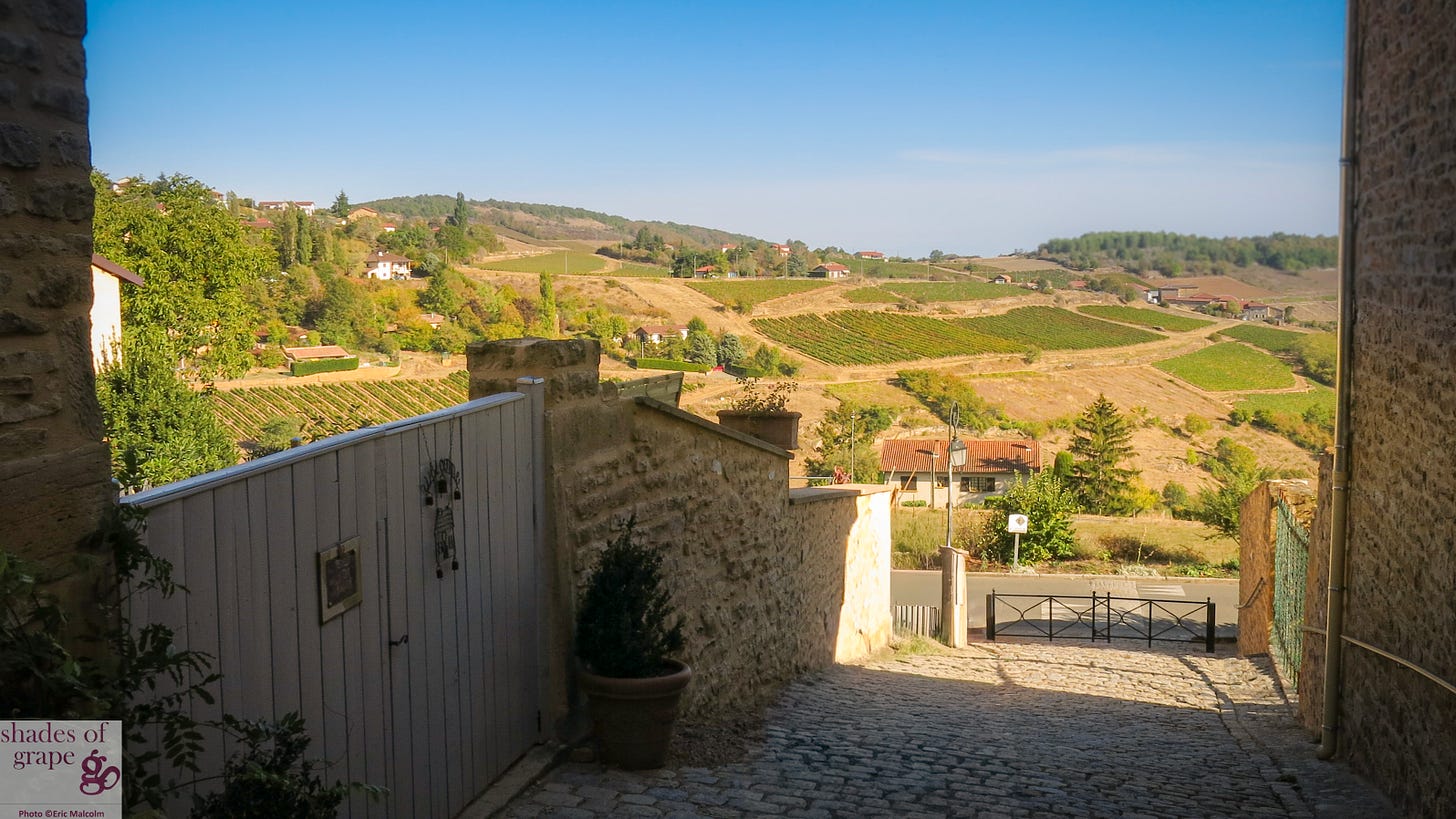
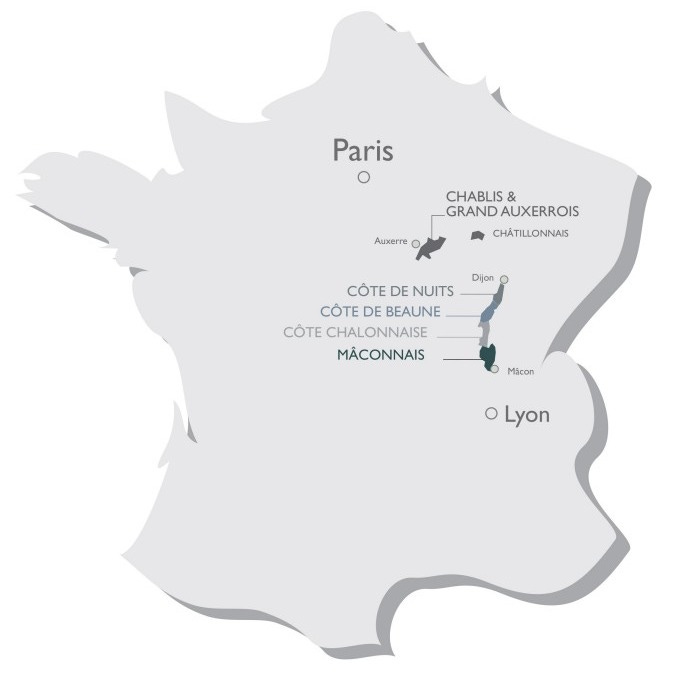
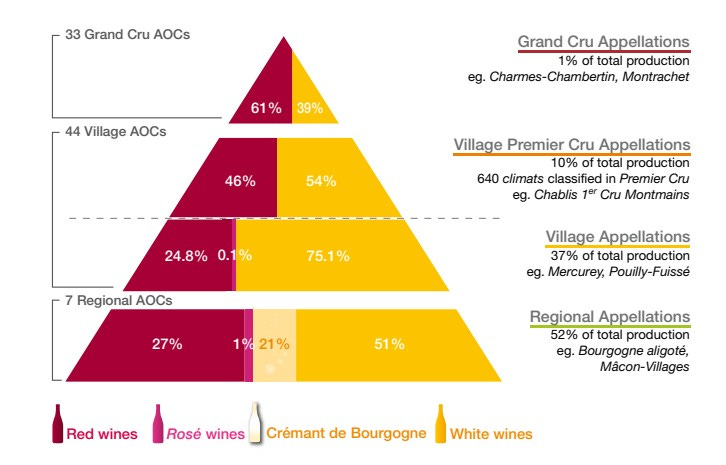
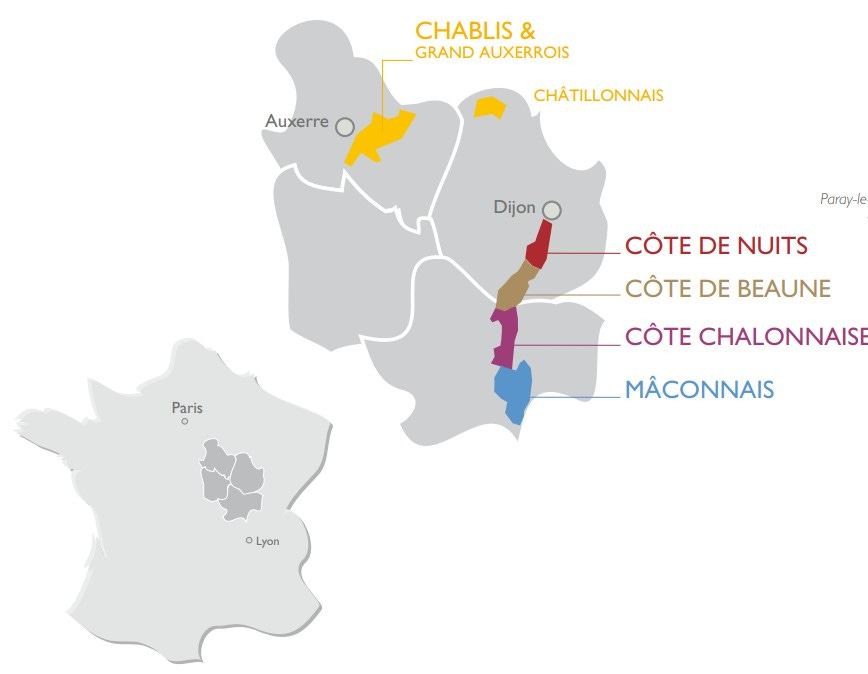
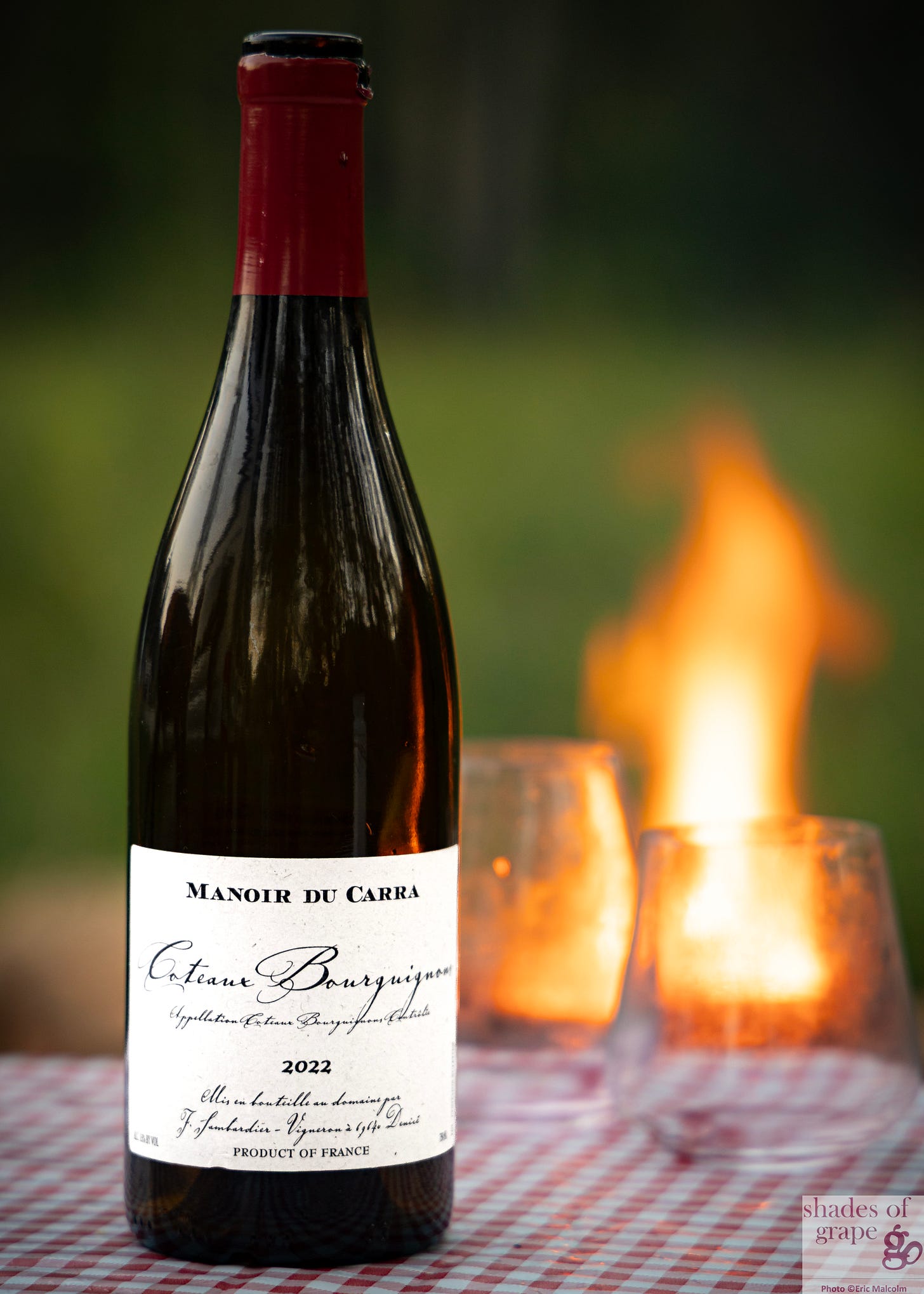
https://finepinot.com.au/blogs/news/why-the-duke-of-burgundy-banned-gamay-a-pinot-noir-legacy-that-lives-on
So to be historically accurate, both grapes were planted and grown in Burgundy in the 14th century, and were in competition until the Duke banned Gamay.
It's been a long time, but I can go back and take a look. I picked up this information during/after my trip to Beaujolais some years back.